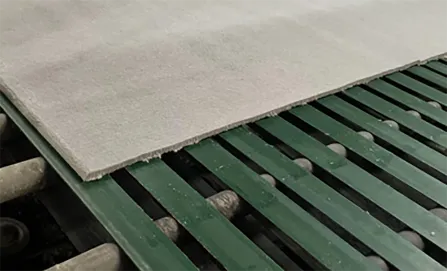Dec . 17, 2024 01:59 Back to list
difference between gypsum and pvc ceiling
Understanding the Difference Between Gypsum and PVC Ceilings
When it comes to home improvement and interior design, the choice of ceiling materials plays a crucial role in the overall aesthetic and functionality of a space. Among the most popular materials used for ceilings, gypsum and PVC (polyvinyl chloride) are widely recognized for their unique properties and advantages. Understanding the differences between these two materials is essential for homeowners, contractors, and designers alike.
Gypsum ceilings, often referred to as drywall or plasterboard ceilings, are made from calcium sulfate dihydrate. This mineral-based material offers a solid and sturdy structure, which makes it an excellent choice for a long-lasting ceiling solution. Gypsum ceilings are known for their fire-resistance properties, which can provide an additional layer of safety in the event of a fire. They can withstand high temperatures and do not release toxic fumes, making them a safe option for residential and commercial spaces.
On the other hand, PVC ceilings are manufactured from plastic and are lightweight in comparison to gypsum. This material is not only water-resistant but also resistant to many chemical substances, making it suitable for areas prone to moisture, such as bathrooms and kitchens. While PVC ceilings may not provide the same level of fire resistance as gypsum, advancements in technology have led to the production of flame-retardant PVC products.
2. Aesthetic Appeal
When it comes to design versatility, gypsum ceilings offer an extensive range of possibilities. Available in various textures, finishes, and colors, gypsum can be easily customized to suit different architectural styles and personal preferences. It can be painted, textured, or even shaped into intricate designs, providing a high-end finish that can elevate the look of any interior.
In contrast, PVC ceilings are designed to provide a modern, sleek appearance. They come in various styles, including glossy, matte, and even wood-like finishes. The easy installation of PVC panels allows for creative arrangements that can significantly enhance the visual appeal of a room. However, they may not provide the same luxurious look as well-finished gypsum ceilings.
3. Installation Process
The installation process for gypsum ceilings can be time-consuming and requires specialized skills. This material typically involves a framework of metal or wooden studs, on which the gypsum boards are mounted. After installation, the ceilings usually require additional finishing work such as taping, mudding, and painting. This complexity can lead to higher labor costs and longer project timelines.
difference between gypsum and pvc ceiling

On the other hand, PVC ceilings are much easier and quicker to install. They often come in panels or planks that interlock, eliminating the need for complicated frameworks. This feature makes PVC a popular choice for DIY enthusiasts looking to improve their space without the need for professional installation. As a result, the labor costs associated with PVC ceilings tend to be lower.
4. Maintenance and Lifespan
Gypsum ceilings require regular maintenance to keep them in good condition. They are susceptible to damage from water leaks, which can lead to mold growth if not addressed promptly. Repairs can be labor-intensive, often requiring replacement of sections or full repainting after fixing any damage.
Conversely, PVC ceilings are low maintenance and highly resistant to moisture, mold, and mildew. A simple wipe-down with a damp cloth is usually sufficient to keep them clean. Additionally, PVC ceilings do not warp or crack over time, making them a durable choice that can last for decades with minimal upkeep.
5. Cost Considerations
When comparing costs, gypsum ceilings generally fall on the higher end of the price spectrum due to their material composition and labor-intensive installation process. The overall expense can vary based on design complexity and the quality of the materials used.
PVC ceilings, while sometimes perceived as a budget option, offer an economical alternative with lower installation costs and less long-term maintenance expense. This affordability makes PVC a favored choice for those looking to renovate or upgrade their ceilings without breaking the bank.
Conclusion
Choosing between gypsum and PVC ceilings ultimately depends on individual preferences, specific needs, and budget constraints. Gypsum ceilings offer a timeless elegance and design flexibility, while PVC ceilings provide a modern, affordable, and low-maintenance solution. By understanding the key differences between these two materials, homeowners can make informed decisions that enhance the beauty and functionality of their spaces.
-
Durable Ceiling T Grid Systems | Easy InstallationNewsAug.29,2025
-
PVC Gypsum Ceiling: Durable, Laminated Tiles for Modern SpacesNewsAug.28,2025
-
Pvc Gypsum Ceiling Is DurableNewsAug.21,2025
-
Mineral Fiber Board Is DurableNewsAug.21,2025
-
Ceiling Tile Clip Reusable DesignNewsAug.21,2025
-
Ceiling T Grid Modular DesignNewsAug.21,2025







